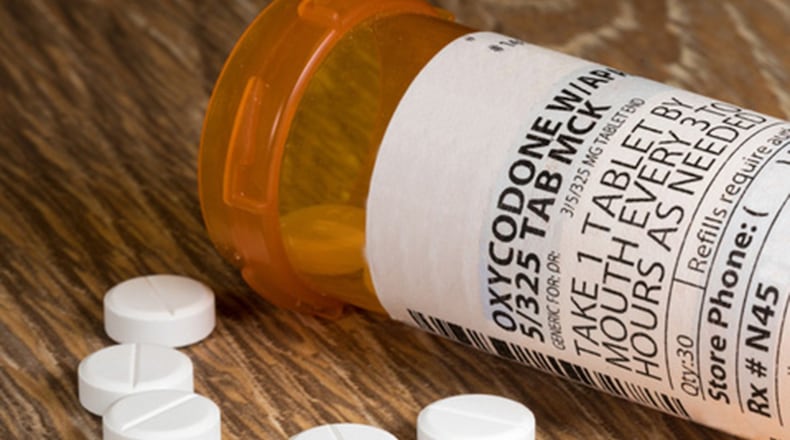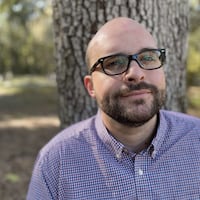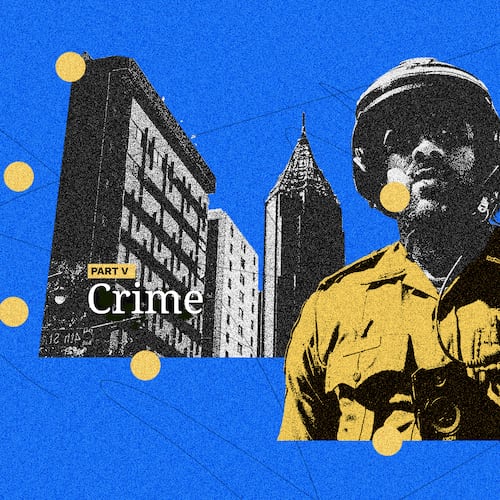Fatal overdoses from prescription drugs have significantly dropped throughout much of Georgia in recent months, a signal that efforts to curb the state’s opioid epidemic may be taking hold, though the fight is far from over.
Preliminary 2018 data that the Georgia Bureau of Investigation provided to The Atlanta Journal-Constitution shows prescription drug deaths are declining sharply, while fatal overdoses from illegal drugs are slightly down. Statewide, emergency room visits for overdoses are also mostly down in recent months, according to available Georgia Department of Public Health data.
The GBI statistics don’t cover the four core metro Atlanta counties — Gwinnett, DeKalb, Fulton and Cobb — which account for the largest number of overdoses in the state. But there too are some signs of improvement. The DeKalb County Medical Examiner’s Office gave the AJC data showing they have seen a sharp drop in prescription-related deaths this year from 2017. The Cobb office said it expected a slight overall decline in deaths this year. Gwinnett’s numbers seemed comparable to last year’s, or poised for a decline. The Fulton County Medical Examiner’s Office didn’t provide data.
RELATED: Overdose amnesty law faces legal test
MORE: Atlanta-area governments sue opiod industry as death toll rises
The statistics echo preliminary figures from the Centers for Disease Control and Prevention showing that the number of fatal drug overdoses have leveled off nationally in recent months after soaring to record highs.
But many are hesitant to wave any victory flag while they wait to see if the gains hold and because a potentially tougher fight looms: surging supplies of methamphetamine, cocaine and counterfeit pills.
Still, Georgia cops have some reason to be optimistic.
They credit the Prescription Drug Monitoring Program, which was created in 2017 and updated this July to put new pressure on doctors, as well as increased education and new police philosophy of investigating overdoses.
Gone, veteran drug officers say, are the days when police would simply check to make sure there was no foul play in an overdose and move on. Now, investigators across Georgia are working to track down the source of the substance to make sure no one else is in danger. Wide availability of naloxone, which can reverse an opiate overdose, is also preventing deaths, according to the Georgia Overdose Prevention group.
The result of all the efforts can be seen in the falling numbers, according to the GBI. As of late September, the most recent statistics available, 567 people died from all drugs in Georgia. At the same point in 2017, the number was 679. Within those numbers, prescription drugs had killed 213 people, compared to 282 at the same point last year; illegal drugs, mostly methamphetamine and cocaine, had claimed 281 lives at the end of September, compared to 291 last year. Also down, from 105 to 73, were cases where both illegal and prescription drugs were involved in deaths.
“I definitely think it’s a milestone, because it’s something we’ve been working on for many, many years,” said Mitchell Posey, special agent in charge of the GBI’s Appalachian Regional Drug Enforcement Office.
IN DEPTH: What the painkillers took
MORE: Meth is back and deadlier than ever
Posey, who’s been consulting with public health workers and other drug enforcement leaders about the trends, said a key factor driving the deaths down is the Prescription Drug Monitoring Program. It created a database doctors could check to see what medicines patients had recently filled. As of this July 1, doctors are required to review the system before giving out opioid painkillers and benzodiazepines such as Xanax.
Prescriptions for such drugs have been falling since the program became law in 2017, according to the Georgia Department of Public Health, though the agency is monitoring the numbers to make sure they don’t increase.
‘Be very cautious’
Phil Price, head of the Cherokee County Multi-Agency Narcotics Squad, said his agents are seeing a decrease in the prescription drug problem, which he takes as a positive sign.
“But I would be very cautious,” he was quick to add. “Every step we take has an impact. There’s always the law of unintended consequences.”
One consequence, he and Posey agreed, is people who grew addicted to prescription drugs and have now seen their supply cut off or reduced are turning to illegal drugs. Doctors need to focus not just on complying with the law by checking the database, but also by ensuring patients who are addicted get proper treatment, Price stressed.
If doctors don't take those steps, the consequences can be dire, with patients driven to street drugs, deadly counterfeit pills and even suicide.
State Rep. Kevin Tanner, R-Dawsonville, who pushed the monitoring program, agreed treatment is a necessity: “People who then become addicted to this medication are going to have to have some sort of treatment options.”
Missy Owen, who lost a son to opioid overdose and heads The Zone recovery center in Marietta, said she's still seeing many people suffering from prescription drug addiction and thinks it will be years before Georgia makes real strides. She hears about doctors who continue over-prescribing. She does see hope, though, for one key reason: awareness.
“We are now having the conversation of addiction and recovery out loud,” she said. “Four years ago, when my son went through this and we lost him, we didn’t talk about this out loud. It was very shameful and secretive.”
Ongoing challenges
In Georgia, the most popular hard street drugs are now meth and cocaine. Meth has long been "king" overall in the state, but it's been surging in popularity in the past few years as Mexican cartels flood the country with a highly potent — and, consequently, deadly — form of the drug, according to the U.S. Drug Enforcement Agency.
Lawmakers and police across the country worked hard through the mid-2000s to crush domestic production, and they were largely successful. Then the law of unintended consequences spoke up: cartels, operating in Mexico largely out of the reach of U.S. law enforcement, filled the void with an even more dangerous product that, authorities say, has contributed to a new meth epidemic that is killing far more people than in the mid-2000s when meth because a household name.
The resurgence of cocaine generally is largely due to the 2016 peace treaty signed between the Colombian government and rebels, according to officials in the South American country and the DEA. Since the treaty, cocaine production has exploded, which experts told the New York Times was a sign that rebels never lost control of vast acres of land used for production of the drug.
Posey said the result has now hit Georgia. In 2016 and 2017, cocaine was fourth most common drug involved in overdose deaths in the state, according to GBI data. So far this year, it’s second, behind meth, the usual leader in recent years.
The problem of illegal drugs is harder to combat because governments in the U.S. can’t exert the same control over cartels, who run the meth and cocaine supplies, the same way the lawmakers can put pressure on doctors who are the dealers in the opioid epidemic. Which is why that victory flag isn’t out yet, and it might not be for sometime, if ever.
“As long as there’s money in this, somebody’s gonna find a way to make some money,” Price said of the drug trade. “A lot of what we do is move this problem around. I think we’ve got to continue to push every aspect of this.”
About the Author
The Latest
Featured





